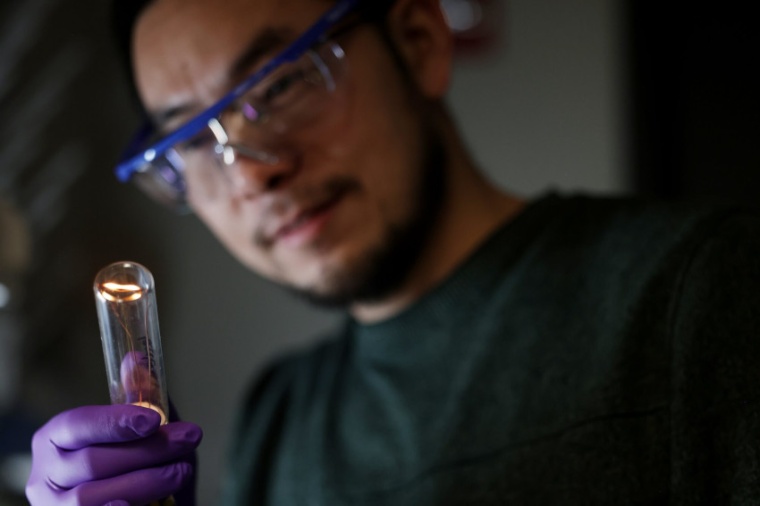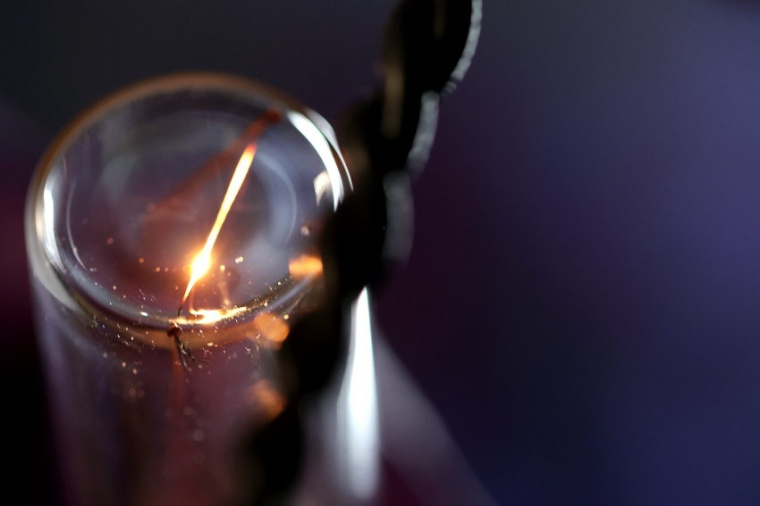Twisted filaments emit elliptically polarized light
Researchers used twisted nanocarbon filaments with submicrometer-scale chirality.
Bright, twisted light can be produced with technology similar to an Edison light bulb, researchers at the University of Michigan have shown. The finding adds nuance to fundamental physics while offering a new avenue for robotic vision systems and other applications for light that traces out a helix in space. “It's hard to generate enough brightness when producing twisted light with traditional ways like electron or photon luminescence,” said Jun Lu, an adjunct research investigator in chemical engineering.


“We gradually noticed that we actually have a very old way to generate these photons – not relying on photon and electron excitations, but like the bulb Edison developed”, Jun Lu said. Every object with any heat to it, including yourself, is constantly sending out photons in a spectrum tied to its temperature. When the object is the same temperature as its surroundings, it is also absorbing an equivalent amount of photons – this is idealized as blackbody radiation. While a tungsten lightbulb's filament is much warmer than its surroundings, the law defining blackbody radiation – Planck's law – offers a good approximation of the spectrum of photons it sends out. All together, the visible photons look like white light, but when you pass the light through a prism, you can see the rainbow of different photons within it.
This radiation is also why you show up brightly in a thermal image, but even room-temperature objects are constantly emitting and receiving blackbody photons, making them dimly visible as well. Typically, the shape of the object emitting the radiation doesn't get much consideration – for most purposes, the object can be imagined as a sphere. But while shape doesn't affect the spectrum of wavelengths of the different photons, it can affect their polarization. Usually photons from a blackbody source are randomly polarized. The new study revealed that if the emitter was twisted at the micro or nanoscale, with the length of each twist similar to the wavelength of the emitted light, the blackbody radiation would be twisted too.
The strength of the twisting in the light, or its elliptical polarization, depended on two main factors: how close the wavelength of the photon was to the length of each twist and the electronic properties of the material – nanocarbon or metal, in this case. The study was undertaken to demonstrate the premise of a more applied project that the Michigan team would like to pursue: using chiral blackbody radiation to identify objects. They envision robots and self-driving cars that can see like mantis shrimp, differentiating among light waves with different directions of twirl and degrees of twistedness.
“The advancements in physics of blackbody radiation by chiral nanostructures is central to this study. Such emitters are everywhere around us,” said Nicholas Kotov. “These findings, for example, could be important for an autonomous vehicle to tell the difference between a deer and a human, which emit light with similar wavelengths but different helicity because deer fur has a different curl from our fabric.”
While brightness is the main advantage of this method for producing twisted light – up to 100 times brighter than other approaches – the light includes a broad spectrum of both wavelengths and twists. The team has ideas about how to address this, including exploring the possibility of building a laser that relies on twisted light-emitting structures. Kotov also wants to explore further into the infrared spectrum. The peak wavelength of blackbody radiation at room temperature is roughly 10,000 nanometers or 0.01 millimeters. “This is an area of the spectrum with a lot of noise, but it may be possible to enhance contrast through their elliptical polarization,” Kotov said. (Source: U. Michigan)
Link: Center for Complex Particle Systems (COMPASS), University of Michigan, Ann Arbor, USA
most read

Softbank acquires ABB's robotics business
The Softbank Group has reached a definitive agreement to acquire ABB's robotics business.

Otto wins IERA Award 2025
Rockwell's robot is an AMR solution that can transport heavy loads in factories and operate in robot fleets of over 100 units.

New member of the board of VDMA Robotics + Automation
Dr. Michael Jürgens, CEO of Kuka Robotics, has been appointed to the board of the VDMA trade association.

Electrical and digital industry calls for strategy for Europe's digital sovereignty
The French and German electrical and digital industry associations, FIEEC and ZVEI, are calling for a proactive strategy for Europe's digital sovereignty.

Change in management at Stemmer Imaging: Arne Dehn steps down
New interim CEO Paul Scholten takes over management






